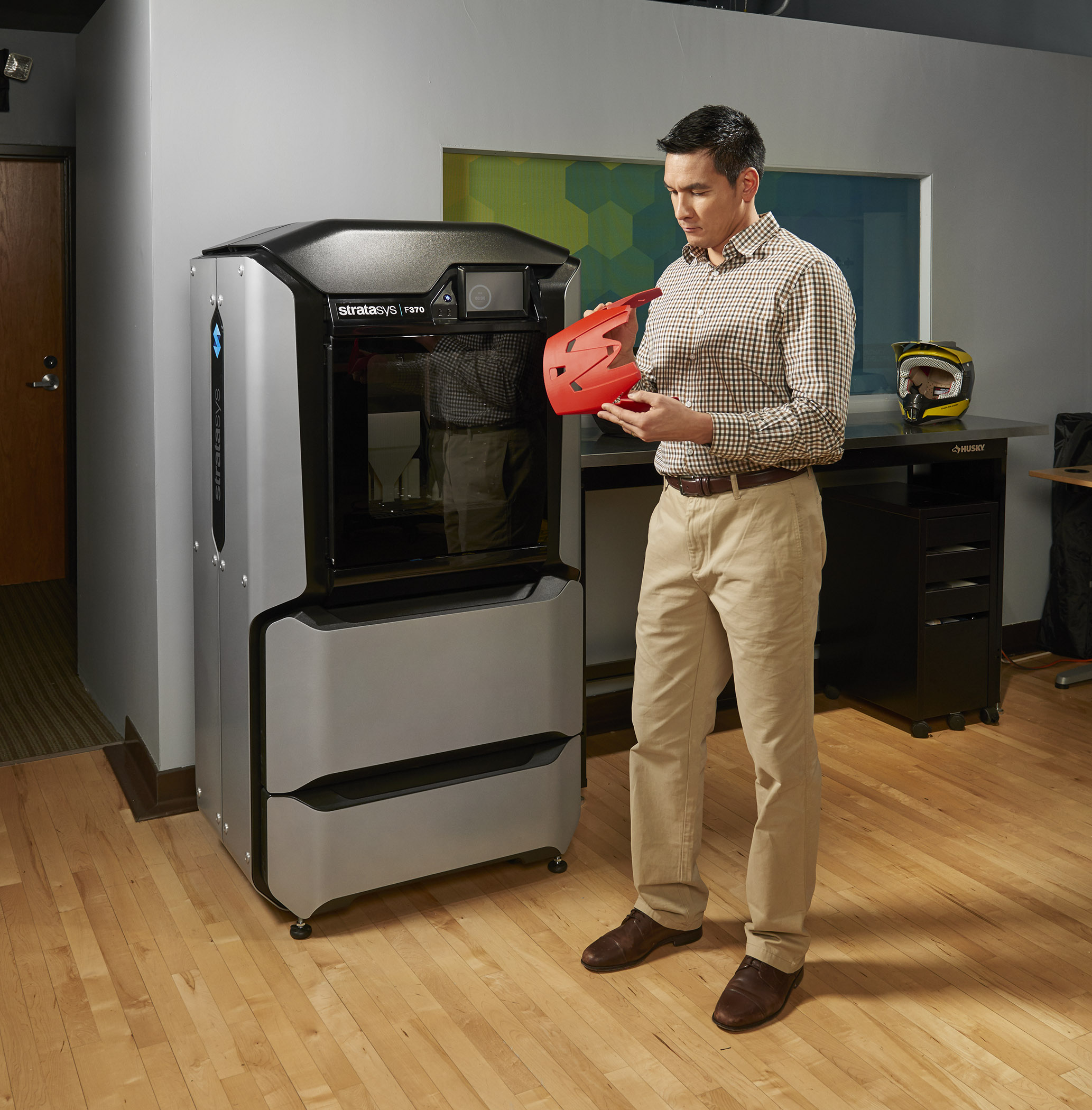New Stratasys 3D printers enable rapid prototyping from your workspace


The 3D printing company Stratasys has launched a new series of printers that enables high-quality, rapid prototyping from any office or lab setting.
The new FDM-based F123 machines (which include the F170, F270 and F370) sit in a workspace like any other printer or copier. They should be easy to use, regardless of your experience with 3D printing, Stratasys says. Most operations can be accomplished with its touchscreen interface, or users can operate the machines remotely from any networked computer in a shared workspace.
The machines can be used through the whole prototyping workflow, from initial concept verification to design validation and final functional performance. According to recent Stratasys surveys, product designers and engineers have been looking for a 3D printer that enables easy, rapid prototyping for their entire workgroup. A range of industries, including the aerospace and automotive sectors, rely heavily on design workgroups to develop products, Stratasys noted.
"It's pretty powerful having this much capability in a single system that sits right in our work space," Jesse Hahne, a partner with the Center for Advanced Design, said in a statement. "We've tried lower-end 3D printers in the past, and to be honest, they're dimensionally inaccurate. The key for us to fast-track product development is getting physical samples in front of our customers as soon as possible."
Along with accessibility and ease of use, Stratasys' research showed that product design teams are looking for 3D printers that offer a choice of materials. The Stratasys F123 Series accepts up to four material types in 10 colors. Its Fast Draft Mode can use PLA material to quickly produce conceptual prototypes at a low cost per part. Alternatively, the printers can use production-grade ASA and ABSl for stable, repeatable parts, or it could use engineering-grade PC-ABS for even stronger, impact-resistant parts.